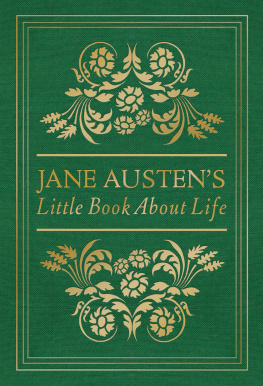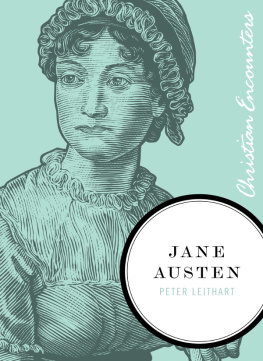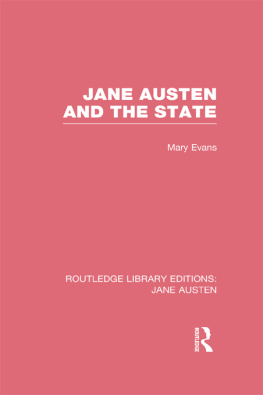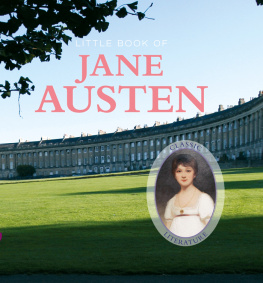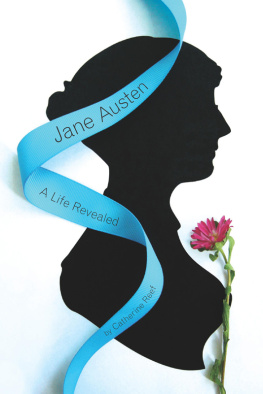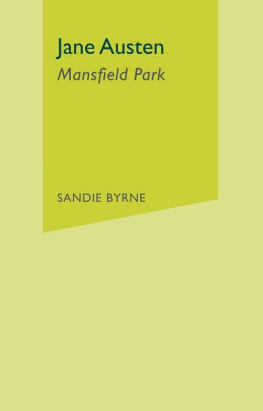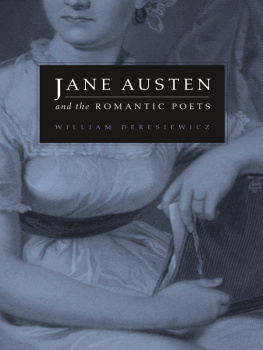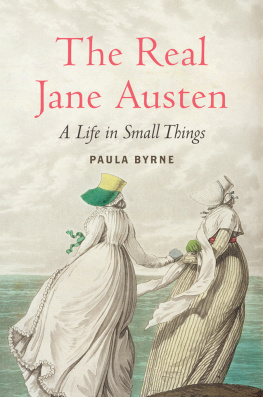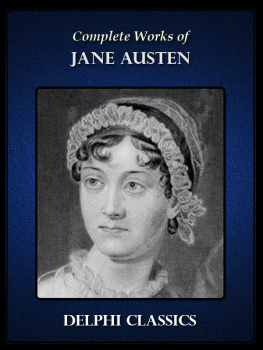Contents
Guide
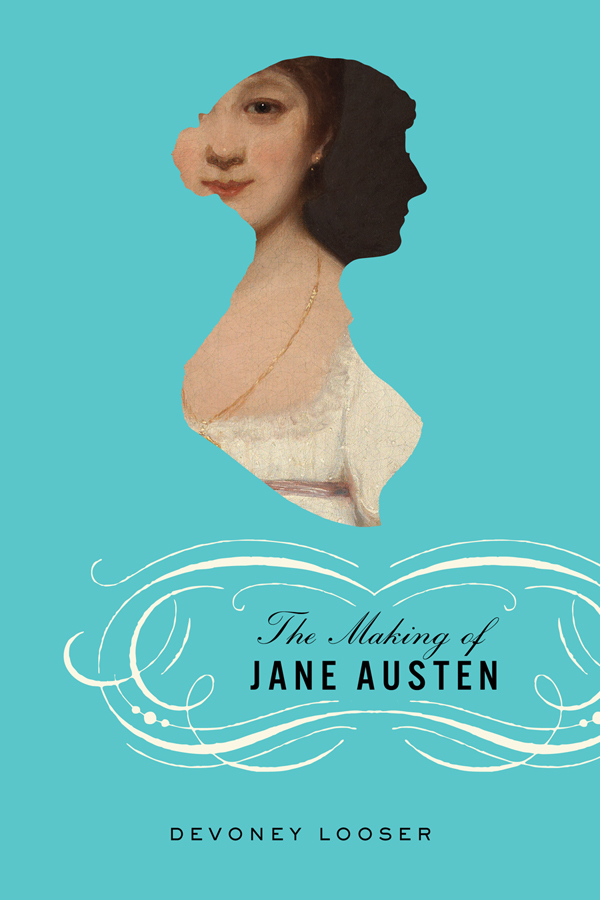
The Making of Jane Austen
MAKINGJANE AUSTEN
Devoney Looser
Johns Hopkins University Press
Baltimore
2017 Johns Hopkins University Press
All rights reserved. Published 2017
Printed in the United States of America on acid-free paper
2 4 6 8 9 7 5 3 1
Johns Hopkins University Press
2715 North Charles Street
Baltimore, Maryland 21218-4363
www.press.jhu.edu
Library of Congress Cataloging-in-Publication Data
Names: Looser, Devoney, 1967 author.
Title: The making of Jane Austen / Devoney Looser.
Description: Baltimore, Maryland : Johns Hopkins University Press, 2017. | Includes bibliographical references and index.
Identifiers: LCCN 2016041514| ISBN 9781421422824 (hardcover) | ISBN 9781421422831 (electronic) | ISBN 1421422824 (hardcover)
Subjects: LCSH: Austen, Jane, 17751817Influence. | Austen, Jane, 17751817AppreciationHistory. | Austen, Jane, 17751817AdaptationsHistory and criticism. | Austen, Jane, 17751817Criticism and interpretationHistory. | English literatureSocial aspects. | BISAC: LITERARY CRITICISM / European / English, Irish, Scottish, Welsh. | SOCIAL SCIENCE / Popular Culture.
Classification: LCC PR4038.I52 L66 2017 | DDC 823/.7dc23
LC record available at https://lccn.loc.gov/2016041514
A catalog record for this book is available from the British Library.
Unless otherwise noted, illustrations are from the authors private collection.
Additional images described in the book are available at makingjaneausten.com.
Special discounts are available for bulk purchases of this book. For more information, please contact Special Sales at 410-516-6936 or specialsales@press.jhu.edu.
Johns Hopkins University Press uses environmentally friendly book materials, including recycled text paper that is composed of at least 30 percent post-consumer waste, whenever possible.
To my tween sons, Carl and Lowell Justice:
You asked me if Jane Austen belongs among the top 100 authors of all time. When I assured you that she does, you replied, What is she then, like, 99?
CONTENTS
The Making of Jane Austen
Introduction
Jane Austen Matters
She was not born, but rather became, Jane Austen.
On one hand, this is a ludicrous statement. Jane Austen was an actual historical person. She came into the world on December 16, 1775. She wrote six full-length novels. She died, age forty-one, on July 18, 1817. These details are not in dispute by anybody, nor should they be.
But it was only after she diedand in some cases long after she diedthat her life and its story gained its public dimensions. Adjectives were attached to her name. They included glowing words and phrases, such as great novelist or greatest novelist. Shakespeare of the novel. Devoted daughter, sister, aunt. Universal. Satirist. Genius. Gentlewoman. Celebrated. Less glowing words and phrases emerged, too: Minor novelist. Lady novelist. Without passion. Narrow. Uneventful. Apolitical. Vulgar. Elitist. Old Maid. Some phrases go both ways, like chick lit, feminine, and feminist. Its at the moment when we acknowledge the formative power of these phrases on past readers, viewers, and criticsand on us todaythat Jane Austen, actual historical person, becomes the Jane Austen of prayer candles, learned tomes, and salt and pepper shakers.
Simone de Beauvoir famously wrote, On ne nat pas femme: on le devient (One is not born, but rather becomes, a woman). De Beauvoir revolutionized understandings of gender identity and performance. claim shes the greatest novelist writing in English. Others speak of her as a great woman writer or a pioneer or a role model. Were often probed to agree or disagree with these assessments. It might be more fruitful to ask ourselves how and by whom these questions were framed and posed in first place. Some ask, Why Jane Austen? We might just as easily ask, Whose Jane Austen?
She has been so much to so many for so long that in some circles she can pass for Jane, going by one name and requiring no introduction. Shes emerged as our go-to classic novelist, whether for smart romance, campy fun, or serious life lessons. Shes referenced by politicians, actors, critics, teachers, artists, fellow writersby almost every category of people who speak and work in public. These people, whether or not they believed they were being true to her, have repurposed her words and images. Even de Beauvoir herself participated. In The Second Sex (1949) she mentions Austen as a cultural-victim-woman-author who supposedly had to hide herself in order to write (124). Its a caricature that de Beauvoir had every reason to believe and repeat as accurate in the 1940s. It was a circulating myth that suited the case she was making. Many myths have come and gone in the years since Austens death. Tracking their fashionability and staying power has taken on greater importance as her popularity has soared in our own time.
Theres little to be gained, except perhaps false comfort, in approaching Jane Austens posthumous road to fame as a straight-line history. Its not an account best laid out with a single overarching argument. The bona fide story of the making of Jane Austen has neither a comic novels rising action, climax, and happy ending nor a tragedys disturbing, mass killing-off. Worthier histories of the making of Jane Austen must take on strands, offshoots, and contradictions. In this book, I set out to describe particularly important stories of her making as they unfolded in culturally significant zones. Each chapter digs into images, texts, people, and institutions of Austen, describing contributions, debates, and patterns over time and seeking places that we havent yet scrutinized or scrutinized enough. The story of the making of Jane Austen ought to weigh more heavily on matters such as book illustration, dramatization, early film, and uses by politicians, activists, and teachers, rather than on the musings of literary critics ensconced in academic communities.
Despite a massive amount of scholarship and commentary on Austen, weve only just begun to offer better histories of her legacy, especially for anything pop culturerelated that happened prior to 1995. We like to talk .
Many believe our own era deserves credit for discovering Austens potential as an inspiration for what we call girl-power feminism. Were wrong. Well see in . Late nineteenth-century students of acting and public speaking and students of English literature were getting Austens that were entirely at odds.
It sounds impossible, but Jane Austen has been and remains a figure at the vanguard of reinforcing tradition and promoting social change. In early 1900s London, when elite men were drinking, singing, and calling Austen an apolitical author in their private mens clubs (). One marcherthe first to play Jane Austen on stage, the first to codirect a Jane Austen dramatization for the legitimate stage, and the first professional actor to play Elizabeth Benneteven participated in a suffragist protest that threw rocks at the clubmens windows, in order to gain attention and provoke arrest. Each group saw its image of Austen as the right one, although these versions of the author couldnt have been more different. For more than a century, Austen has been an inspiration, role model, and mascot for groups that have otherwise had little in common. In some situations, and at some moments, Austen has been presented as gloriously conservative. At others, shes described as unflinchingly progressive. No wonder its exceptionally difficult to tell the history of her image, reputation, and legacy with any nuance.


